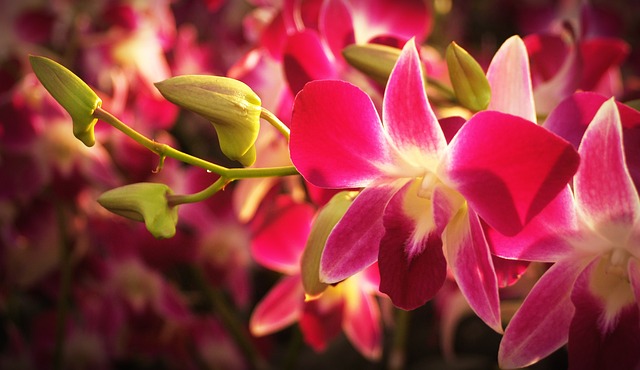15 Amazing Facts About Orchids

Do you know that specific types of Orchid can last up to 100 years? What’s more, that Orchids have the biggest assortment of blossoms with the quantity of formally recorded species remaining at a stunning 25,000 or more? With so much variety, it ought to be nothing unexpected that there are some astounding realities about Orchids that are not generally known. Except for zones with too hot or chilly climate, Orchids for all intents and purposes grow everywhere on the planet and scientist are finding all the more new species constantly.


1. Bond amongst orchids and certain types of insects is tight and exceedingly specific. Petals have comparative shape and color like female insects in order to draw in males and guarantee pollination. Ophrys apifera, otherwise called the Bee Orchid, baits male honey bees with its alluring scent and honey bee like appearance. At the point when a male honey bee approaches the blossom to mate, it winds up covered in pollen and is sent off to pollinate the following orchid it visits.
2. Orchid seeds don’t have an endosperm which gives the supplements required to the germination. Because of this, all orchids (counting non-parasitic forms) live in beneficial interaction with fungi amid germination. Germination can last from couple of weeks to 15 years.
3. People utilize orchids for various purposes. Substances segregated from orchids are utilized as a part of industry of fragrances, flavors and in customary Asian medicine.
4. Because of high specialization of pollination, extinction of insect means extinction of orchid.
5. Orchids don’t have regular roots. They have rhizome, tuber or aerial roots.


6. Orchids are extremely old plants. As indicated by the fossil confirmations, orchids have existed on the planet around 100 million years.
7. Vanilla is one of the best known and generally utilized flavors. It is removed from the pod of Vanilla planifolia, which is a type of orchid.
8. Each orchid flower is bilateral symmetric, which implies that it can be isolated in two equal parts.
9. Orchids can live on the ground (earthly forms), appended to woody plants (epiphytic sorts) or under the ground.
10. The family Orchis originates from an Ancient Greek word signifying “testicle” – due to the shape of the bulbous roots. The expression “orchid”, which is only an abbreviated type of the family Orchidaceae, was not presented until 1845.


11. Blossom of orchid can last from couple of hours to 6 months, contingent upon the species.
12. The size, shape and surface of leaves rely on upon the living space. Orchids that live in dry atmosphere have thick leaves secured with wax, while species that live in warm and humid regions have thin, extended leaves. Certain types of orchids even don’t have leaves.
13. The size of orchids relies on the species. They can be little as a penny or very big, reaching weigh of even couple of hundred pounds. Grammatophyllum are medium-sized to huge orchids, including the monster orchid(Grammatophyllum speciosum), accepted to be the biggest orchid species known today. Its pseudobulbs can develop to a length of 2.5 m. Plztystele jungermannioides, which is accepted to be the littlest Orchid on the planet grows a measly 2mm. Orchid Plants can form into big groups weighing from a few hundred kilograms to one ton.
14. Orchids create millions of miniature seeds. Just few seeds will form into a mature plant.
15. Certain types of orchids are parasitic. They are not ready to create food (sugar) utilizing the daylight and carbon dioxide like other plants. Rather, they get food from organisms that live inside their roots.



